
Sanakham Dam Hydropower Info by Hobo Maps - Go to Hydropower Projects Page - - - Home
The original site location of the Sanakham Dam project has changed and some older info on the web still has the old location.
The new dam site is located at about 36 km downstream of the original dam site, with Xayaboury province at the right river bank and the province of Vientiane at the left river bank looking downriver. This new location is about 1 to 2 km north of where the Thai border at Loei Province meets the Lao border on the Mekong.
Location of proposed new Sanakham Dam site = 17°49'58.8"N 101°33'00.0"E (17.833, 101.550) as shown by red marker below:

The project’s construction was originally expected to begin in 2020 and finish in 2028 but it now seems that construction may begin in 2025.
The project would be developed and owned by Datang Sanakham Hydropower Co. Ltd., an affiliate of Chinese state-owned power producer Datang International Power.
Thai energy company Gulf Energy PCL plans to purchase a 30% to 35% ownership interest in the Sanakham hydropower project.
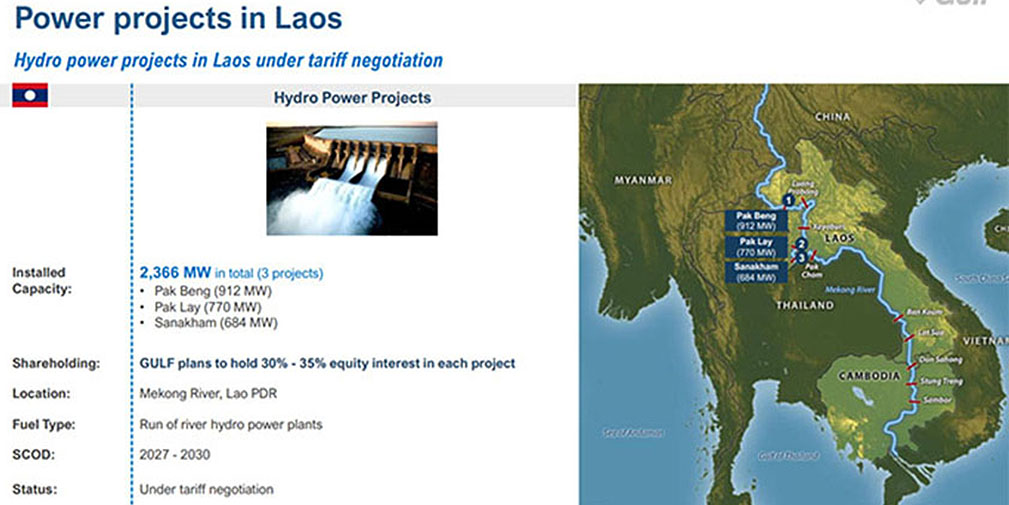
The total cost of the project is estimated at US$ 2,073 million.
The run-of-river style project is designed to operate continuously year-round and produce 684 megawatts of electricity with average annual energy output of 3,803 GWh. It is designed with 12 turbine and generator sets, each producing 57 MW. The project is developed mainly for base-load power generation rather than for peak-load generation.
Since it will be a run-of-river project there will not be a large reservoir but a head pond with a normal pool level at about 220 meters above sea level.
Image below shows proposed Sanakham Dam site.
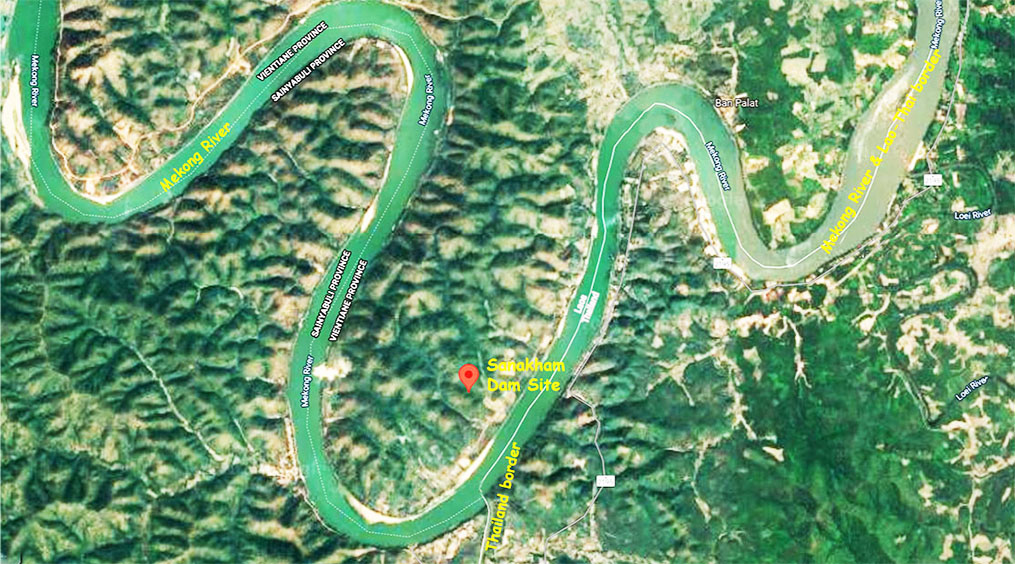
Concept images below of what Sanakham Dam project may look like:
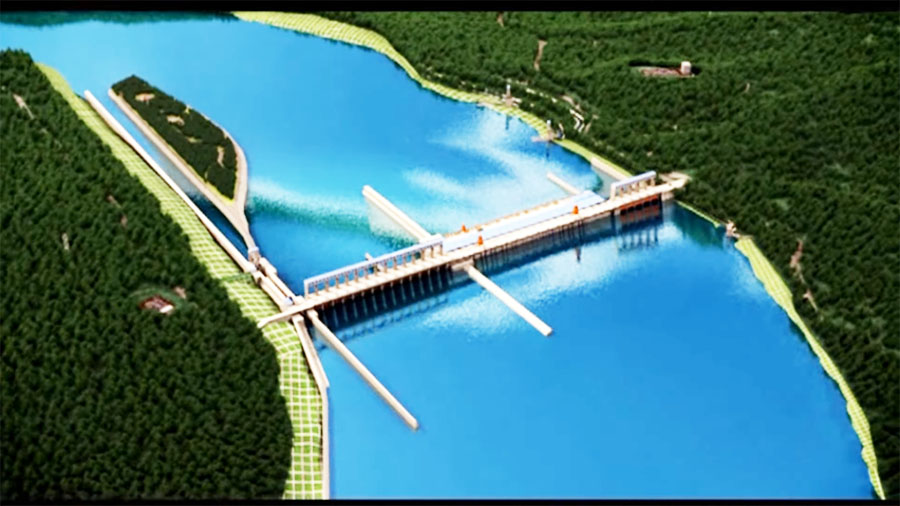
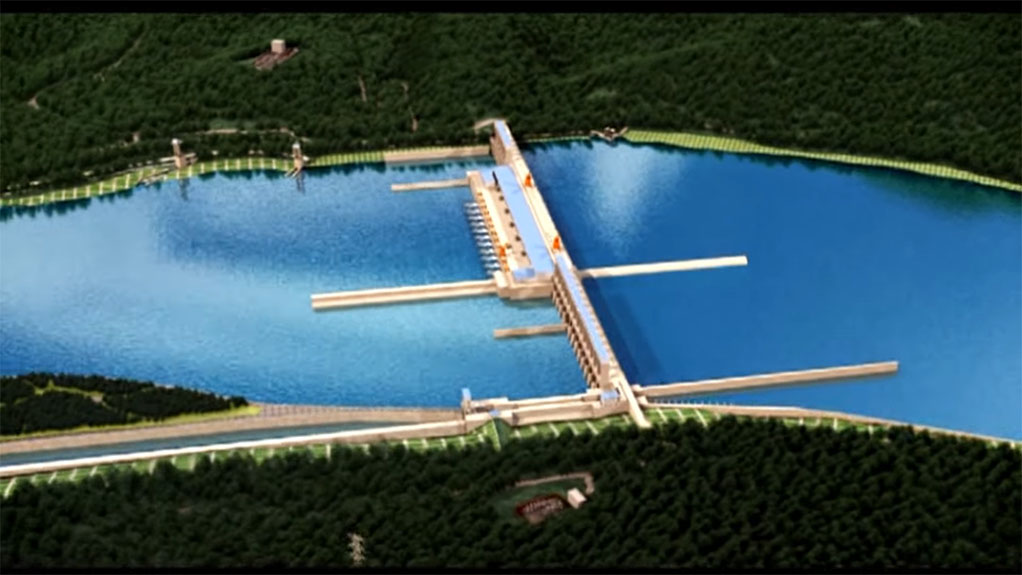

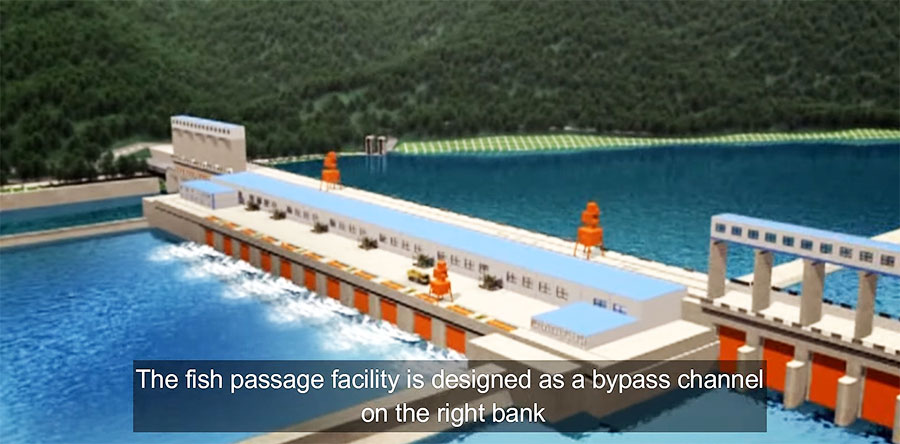
Sanakham Dam site images below:
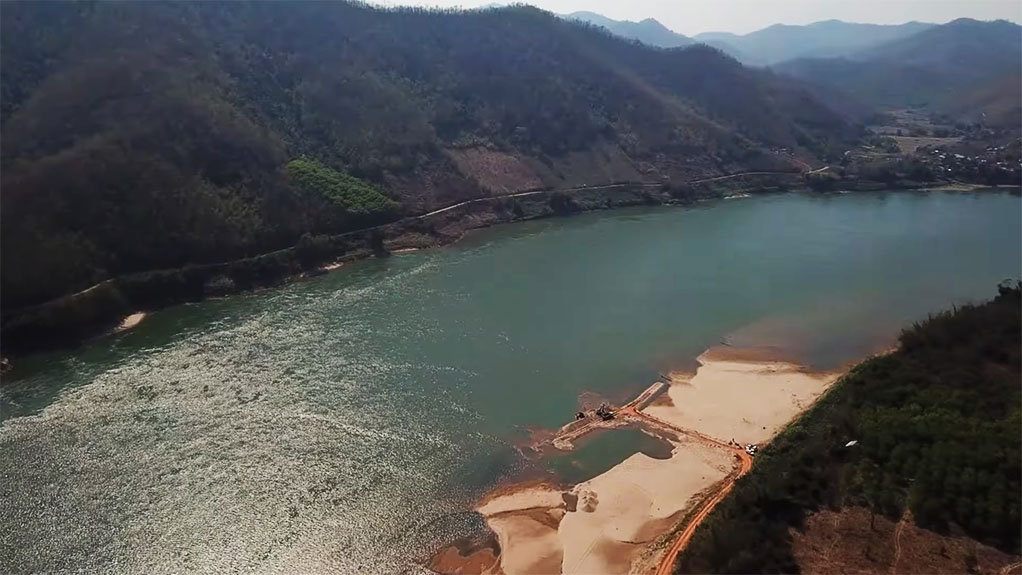
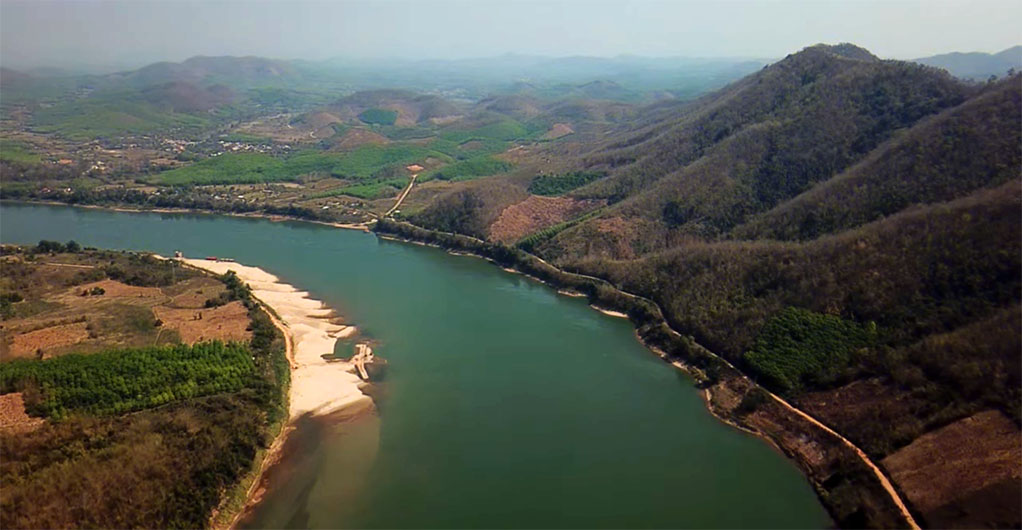
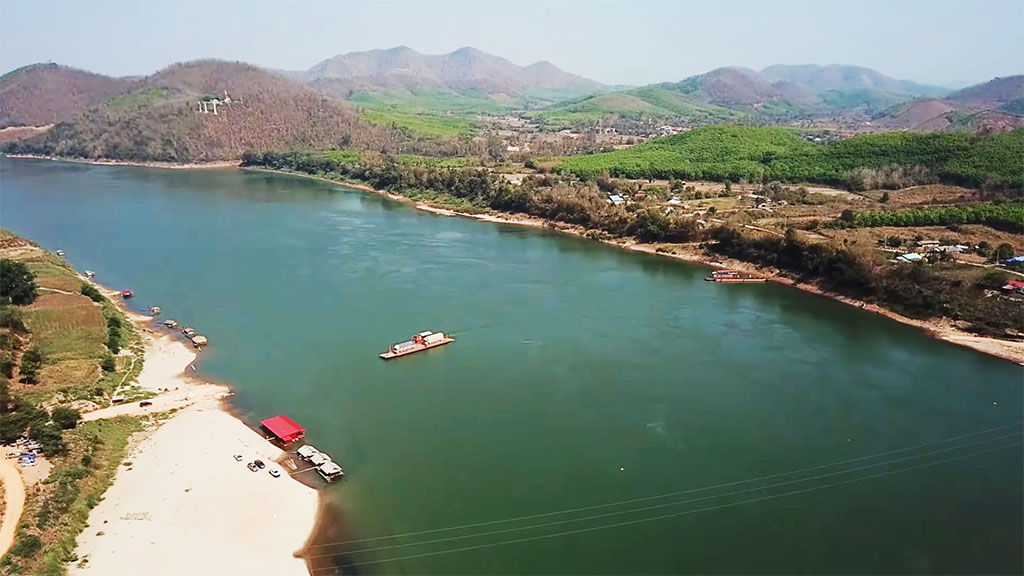
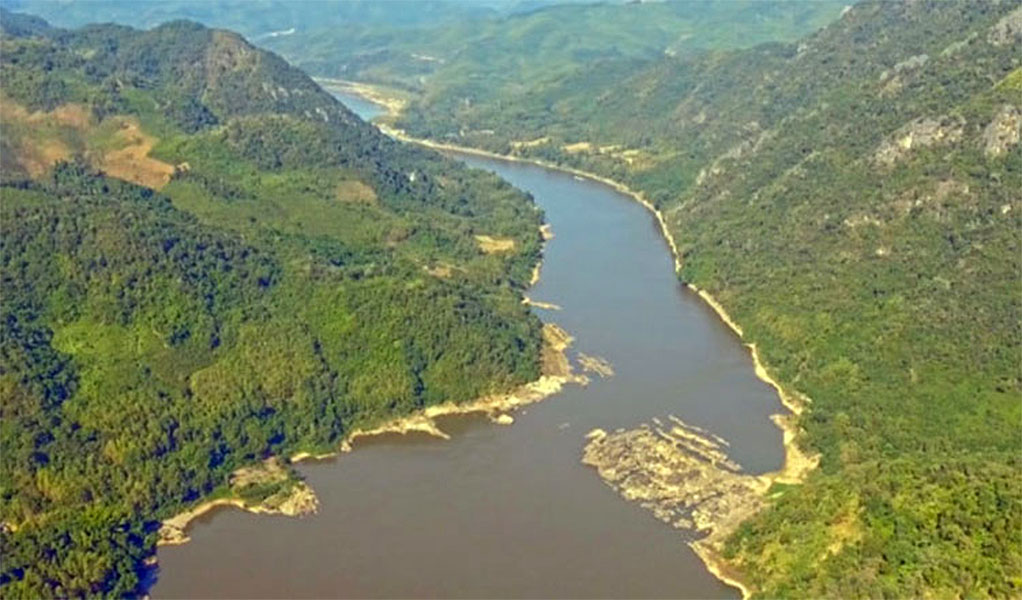
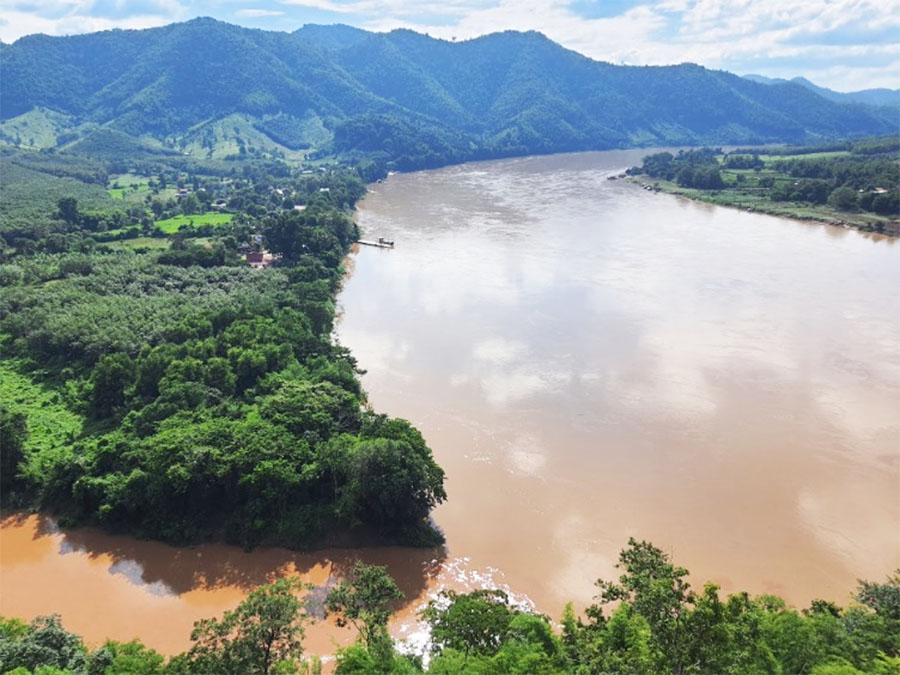
The dam height is 56.2 meters with crest length of 909.9 meters.
The powerhouse is located at the main river channel, the discharge sluices are located at both sides of the powerhouse and the ship lock is on the left bank.
The powerhouse has 12 bulb turbines at 57 MW each for total 684 MW capacity. An auxiliary powerhouse is located downstream from the main powerhouse.
The navigation structure has a one-step ship lock and space is reserved for future upgrading into a double-line lock.
The fish passage facility is designed for fish to bypass the dam structure on the right bank.
Layout of proposed Sanakham Dam site below:
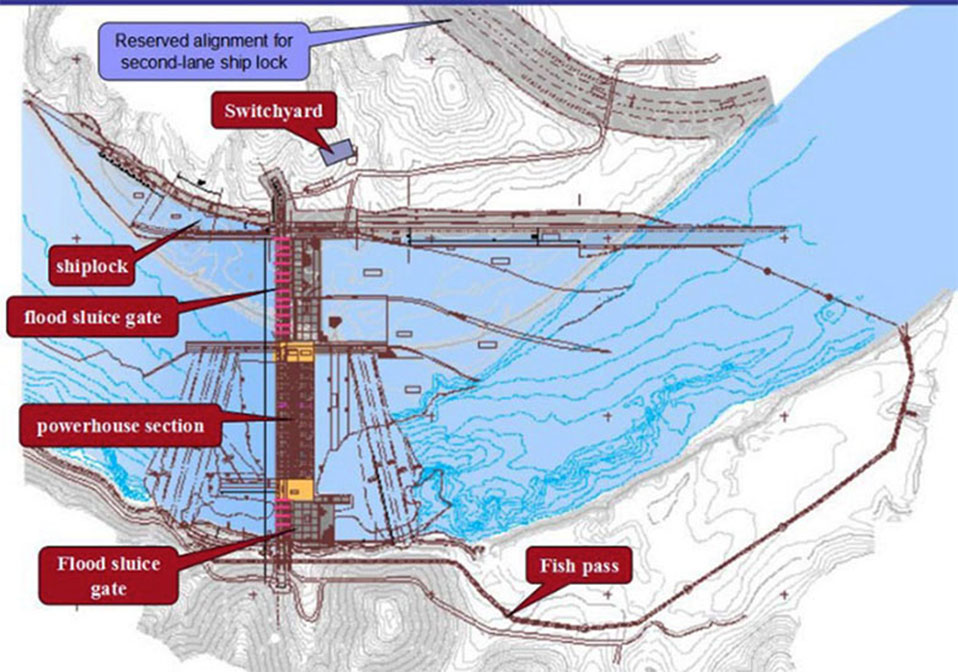
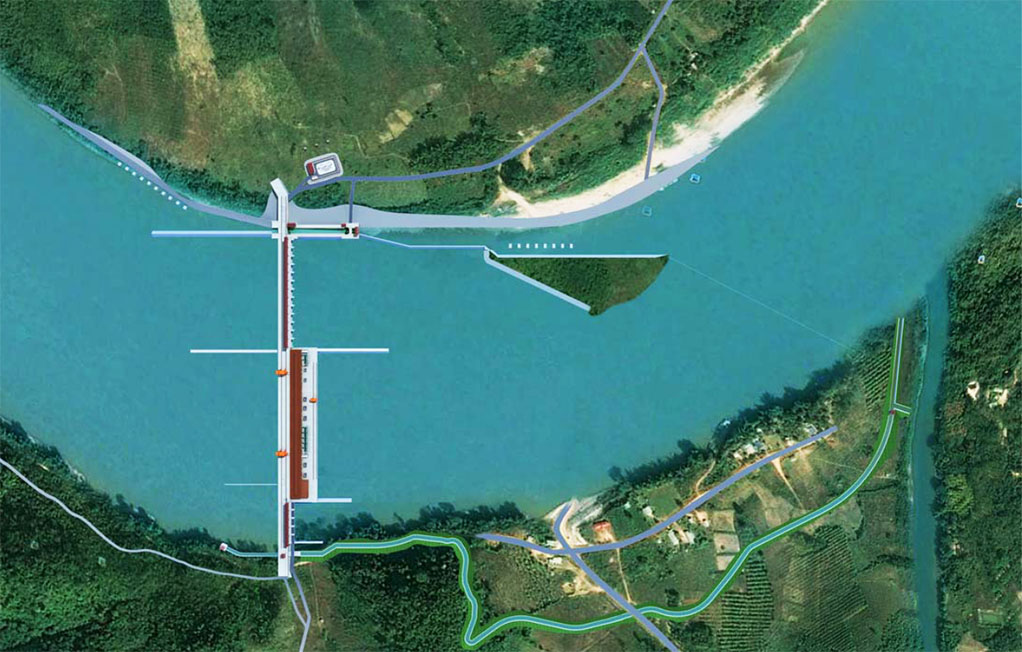
See Nov 30, 2021 video of Sanakham Dam project
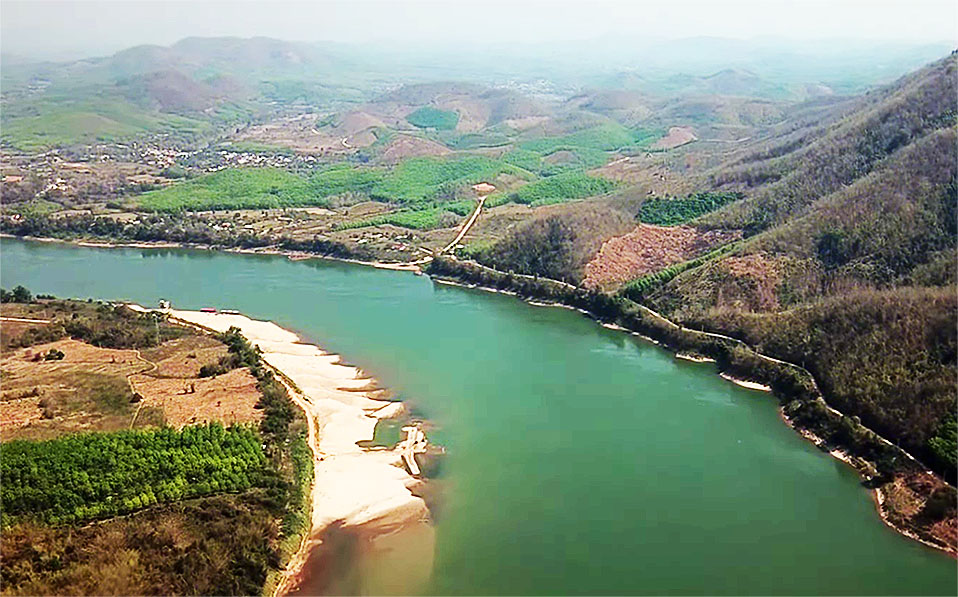
A decision by the MRC Joint Committee indicates that the official six-month prior consultation process that began on 9 September 2019 for the proposed Sanakham dam will end on 19 January 2022. The process had been delayed in the past due to the pandemic and a desire to complete the Luang Prabang dam review process first. Later in November 2024 the Thai government was reported to still be reviewing the project.
In 2024 there are signals that stakeholders of the Sanakham Hydropower project will soon have all necessary approvals finalized and will start construction of the project soon. It seems that Thailand has agreed to purchase most of the power output from the project and a formal Power Purchase Agreement may be executed soon.
Info below from Mekong River Commission PDF documemt July 2020 - Prior Consultation Submission
Generally, the reservoir will be maintained at a normal surface level of 220 masl. When the reservoir inflow is greater than the capacity of the turbines (5,801 m3/s), the sluices with stilling basin will be opened to release the surplus water.
The sediment flushing outlets will remain open throughout the flood period (wet season) and opened periodically in the dry season based on the sediment monitoring data. The suspended load accumulated in front of the power intake is expected to be discharged at regular intervals to ensure that the power intake is free from sediment accumulation. The project will undertake sediment flushing operations for 5 to 7 days every year in early September. If the sediment flushing is not workable, artificial silt-clearing may be done by lowering the water level to eliminate silted coarse sediment.
Location map of Sanakham Dam site below:
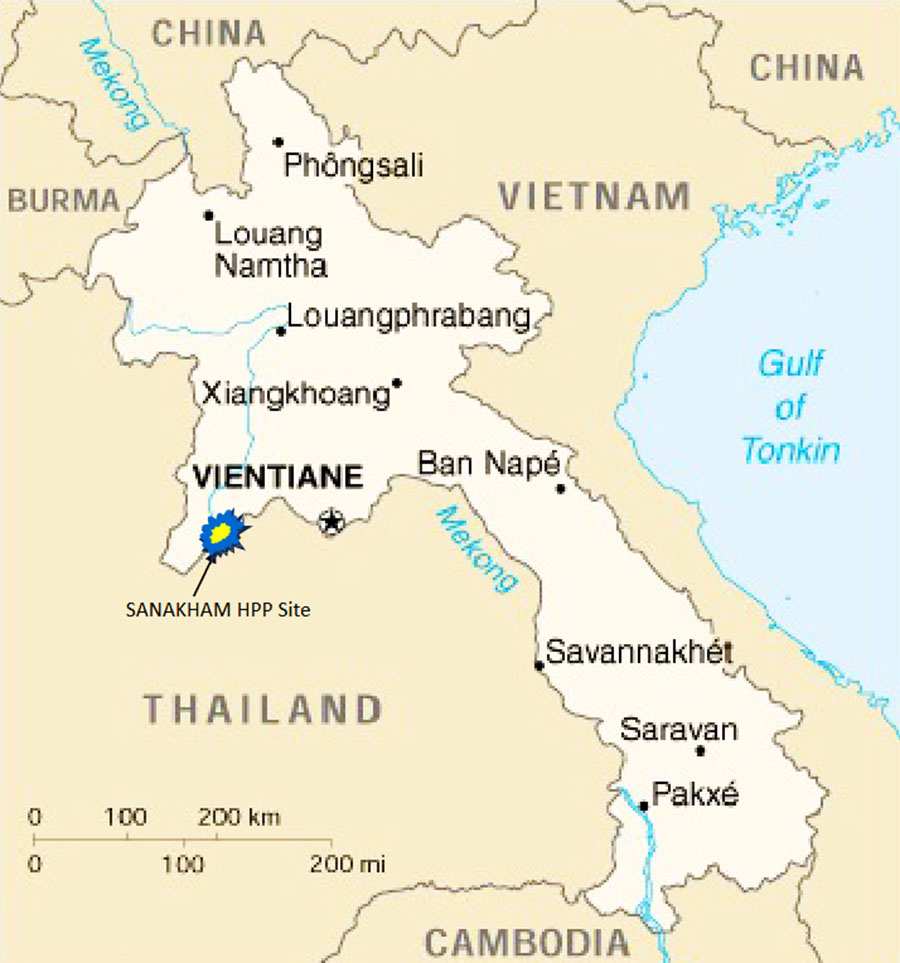
Mekong River Commission info below from 2018 PDF document Environmental Management and Monitoring Plan
Datang (Lao) Sanakham Hydropower Co., Ltd. is the Executing Agency for the project detailed design, surveys (dam, powerhouse, headrace tunnels, substation, and transmission line), preparation and evaluation of tenders and construction supervision.
Sanakham HPP is a run-of-river type project for power generation with features for river navigation and fish passage. The majority of the electricity produced is to be transmitted to the Thailand power grid through 500 kV transmission lines. The remaining electricity will be transmitted to Vientiane for domestic use through a single 230 kV circuit.
Catchment area above the dam site is about 290,000 square kilometers.
The project will allow navigation transit of ships up to 500 tons. The lock chamber is 120 x12 x 4 meters with maximum shipping headroom of 8 meters. Mean duration time for passing through the lock is 40 minutes; daily mean passing frequency is estimated at 20; the number of annual navigable days is 330. Maximum lift of the navigation lock is 20 meters.
The fishpass is composed of an entrance, fishpass pond, resting pond, flood gate and maintenance gates at the entrance and exit. The floor elevation of the fishpass entrance at the right bank is 197 meters above sea level and the entrance width is 5 meters.
A natural-style bypass fishway has been proposed for both upstream and downstream migration of all life stages of fish passing the dam. The fishway has a total length of 2.48 km and is located the right riverbank with two inlets and one outlet. Luring facilities such as lighting and blocking such as electric screen will be set at the inside and outside of the inlet.
Reservoir check flood water level is 223.3 meters above sea level
Reservoir design flood water level is 221.7 meters above sea level
Reservoir normal pool water level is 220 meters above sea level
Reservoir dead water level is 219 meters above sea level
Reservoir area at normal pool level is 131.64 square kilometers
Backwater reservoir length at normal pool level is 81 kilometers
The area of land inundated by the project reservoir includes arable land (565.14 hectares), orchard (59 hectares), woodland (1,750.74 hectares) and homestead (28.1 hectares). Farmlands from 17 villages will be negatively affected and 7 of those will have both farmland and houses negativly affected by the reservoir construction. About 2,935 people will need to be resettled.
Statistics for proposed Sanakham Dam Hydropower project below:

Key structures of the barrage are:
1. concrete auxiliary dam at the left bank
2. navigation lock
3. flood release sluice (14 outlets) at left bank
4. powerhouse (12 generating units) in river channel
5. sand flushing sluice (4 outlets) at right bank
6. fishpass section
7. concrete auxiliary dam at right bank
Dam structure is concrete weir type 910 meters long and 56.2 meters high with crest elevation at 230 meters above sea level.
Reservoir normal water level is 220 masl with storage capacity of 9.87 million cubic meters.
Construction procedures of the main power facility would be in this order:
(1) Construction of the new road (to reach the outlet of the diversion tunnel),
rehabilitation/expansion of existing road, construction of labor camp, and
administration facilities and lay-down area.
(2) Excavation of the diversion tunnel from the outlet toward inlet.
(3) Banking of gravel and soil to construct the pre-coffer dam.
(4) Construction of inlet structure of diversion tunnel and river flow diversion.
(5) Construction of the coffer dam using Reinforced Concrete Cement (RCC) with
the appropriate foundation treatment.
(6) Construction of navigation lock structures and equipments.
(7) Construction of fishpass.
(8) Excavation of dam foundation and abutment. Construction of temporary roads,
batching plant and crashing plant.
(9) Placing consolidation/curtain grouting for dam foundation. Environmental Management and Monitoring Plan
(10) Placing dam concrete. Clearing major trees in the proposed reservoir area with
the cut and burn method.
(11) Installation of turbines, generators, penstock, discharge valve, intake structure,
spillway gates and other related facilities once the placement of the dam concrete
reaches appropriate elevation. Construction of transmission lines.
(12) Installation of transformer and switching facility.
(13) Impoundment by closing the inlet gate of diversion tunnel.
(14) Placement of concrete in diversion tunnel at the dam axis.
(15) Performance test.